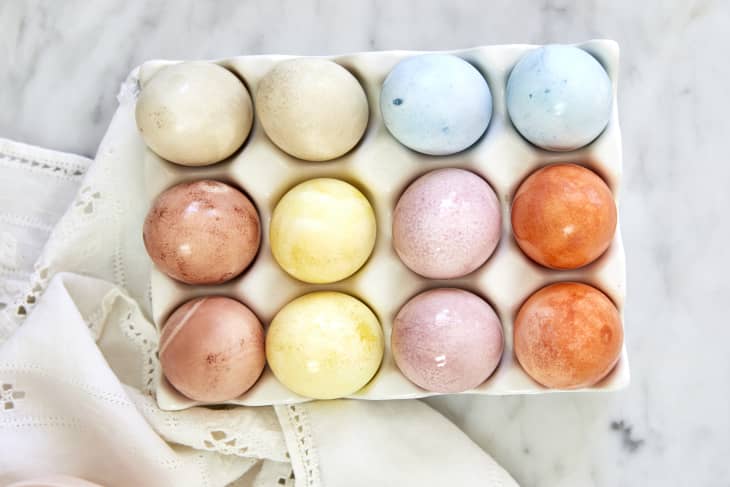The Only 5 Things You Need to Know When Dyeing Easter Eggs
If you celebrate Easter, you’ve most likely been dyeing eggs for years. But have you ever stopped to consider why this process works? There’s some science to it all, and certain conditions are more ideal for egg dye than others.
Here’s all of the essential info you need before you start dunking.
1. Older eggs are better if you’re going to hard-boil them.
If you’re going to end up peeling and eating your Easter eggs, don’t use fresh-from-the-farm eggs. Over time, eggs lose carbon dioxide and moisture; the combination of these changes makes an egg easier to peel (read: no ugly pockmarks on the outside of your hard-boiled eggs, just a smooth clean surface).
2. Vinegar is essential.
Well, let’s rephrase: An acid is needed to help to help bind the dye to the surface of the egg. Without it, you’d only get a pale, lackluster color. The pH of your dye solution needs to be at about a four. So white vinegar does the trick and helps activate the dye so it stays on the eggshell. If you want brighter colors, adding a little more vinegar will help with that.
3. You should use warm or hot water.
You can’t just mix the food coloring or egg dye with water at any temperature. Warm water helps the dye to absorb better than cooler water. Also, it’s recommended that the water should always be warmer than the temperature of the eggs for the same reason.
4. There’s a way to get dye off your hands.
Dyeing eggs is messy business. While the internet is full of ideas that don’t seem to work (sugar and liquid dish soap, for example), we’ve found that baking soda and vinegar will do the trick. Yes, it seems counterintuitive, since the vinegar helps the dye stick to the egg, but it also helps to get the dye off your hands. Wipe your fingers with a cloth soaked with vinegar and then scrub your fingers with a paste of baking soda and water.
5. You can (usually) eat your Easter eggs.
We all hate wasting food, so you may insist on eating your Easter eggs — and you should be fine. Most egg-dyeing kits feature vegetable-based dyes that are food-safe (check to be sure). If you used food coloring or you dyed your eggs with food scraps, you’re good to eat them. However, if your eggs have been out at room temperature for more than two hours, you shouldn’t eat them. Ditto if you’re looking at a hard-boiled egg that’s been cracked and there’s dye on the egg white.
